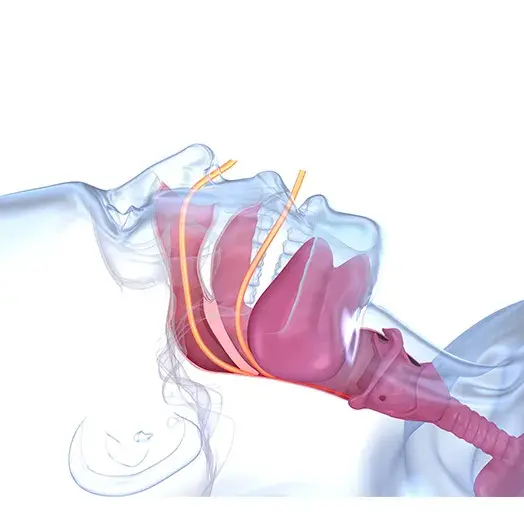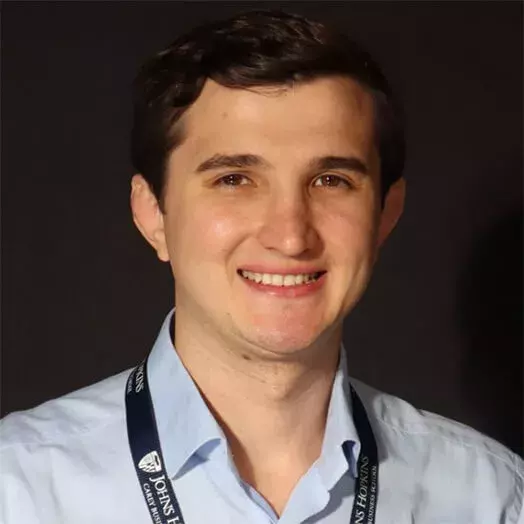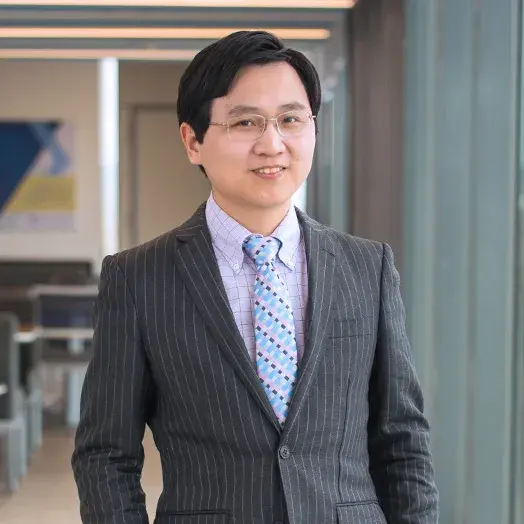Carey MBA students are developing a non-invasive treatment for obstructive sleep apnea, a life-threatening condition that affects hundreds of millions worldwide.

MBA students developing an innovative device to treat obstructive sleep apnea
If you are reading this, chances are that you or someone you know suffers from obstructive sleep apnea, a potentially life-threatening condition that occurs when the airway becomes blocked during sleep, disrupting breathing. Studies vary, but some suggest sleep apnea may affect as many as one in four men and one in nine women in America, although most cases are undiagnosed. Left untreated, sleep apnea can lead to stroke, high blood pressure, and heart attacks, in addition to recurring fatigue from poor sleep.
Obstructive sleep apnea is typically treated with continuous positive airway pressure, or CPAP, which provides a constant stream of pressurized air through a facemask worn while sleeping. Some studies suggest as many as 70 percent of CPAP users can’t tolerate the device. Other treatments include dental appliances that push the lower jaw forward, implanted devices that stimulate tongue muscles, or painful throat surgery.
From idea to innovation
Anders Sideris, a Flexible MBA candidate at Johns Hopkins Carey Business School, and his business partners think they’ve developed a better and more effective way to treat sleep apnea. According to Sideris, Somnair is an oral appliance that uses electrodes that stimulate the throat muscles to open blocked airways during sleep. He says Somnair has many advantages over current treatments because it is less invasive and doesn’t require surgery like other electrode devices.
“Our mission is to end sleep apnea suffering for the million plus patients in America, and the one billion people around the world that suffer from this debilitating disease that can cause strokes and heart attacks and breaks up marriages. People even crash their cars because they're so sleepy,” says Sideris.
Sideris, an otolaryngology surgeon, founded Somnair with Mitchell Turley, Phoebe Dijour, and Shri Prabha Shivram. The four met and formulated the Somnair concept in the Master of Bioengineering, Innovation, and Design program at the Johns Hopkins Whiting School of Engineering. Sideris and Turley are continuing their studies in Carey Business School’s MBA program, as they develop Somnair.
“The way the company was formed and founded and centered on this specific innovation was that we actually spent over a thousand hours of combined observation at Johns Hopkins Hospital looking at all types of ENT surgeries and procedures,” Turley said.
Turley credits the Johns Hopkins business of health ecosystem for helping get Somnair off the ground. “Hopkins really hit the nail on the head, especially the biomedical engineering program, with providing students the access to the medical school to really shadow and observe needs at the root sources and see the root causes as opposed to taking a technology and pushing it on the market,” he said.
What to Read Next

alumni success
Innovative cancer therapy platform among “Most Disruptive Startup” listNext steps
Somnair has already completed proof of concept testing at Johns Hopkins Hospital under the supervision of physicians Kevin Motz and Lou Pham. The next step will be to earn FDA clearance, which requires more safety testing and results that demonstrate the device can be administered effectively by users at home. They are also seeking partners to manufacture and assemble the device.
To help secure funding for the future, Somnair recently received a $50,000 Pava LaPere Innovation Award from the Maryland Student Venture Core Advisory Board. They were also winners of the President’s Venture Fellowship and Innovation & Entrepreneurship Challenge at Johns Hopkins.
“What drives us each day to keep moving forward is thinking about the patients that suffer from their sleep apnea, either from untreated sleep apnea or dealing with devices that aren't fully adequate for their needs in the market today,” said Turley. “We all have personal connections to people with sleep apnea, and our goal is to transform sleep care starting with this group of patients that are really going unnoticed and untreated. We're really committed to making every decision to be whatever's best for that patient and really move this state of sleep apnea care forward.”


